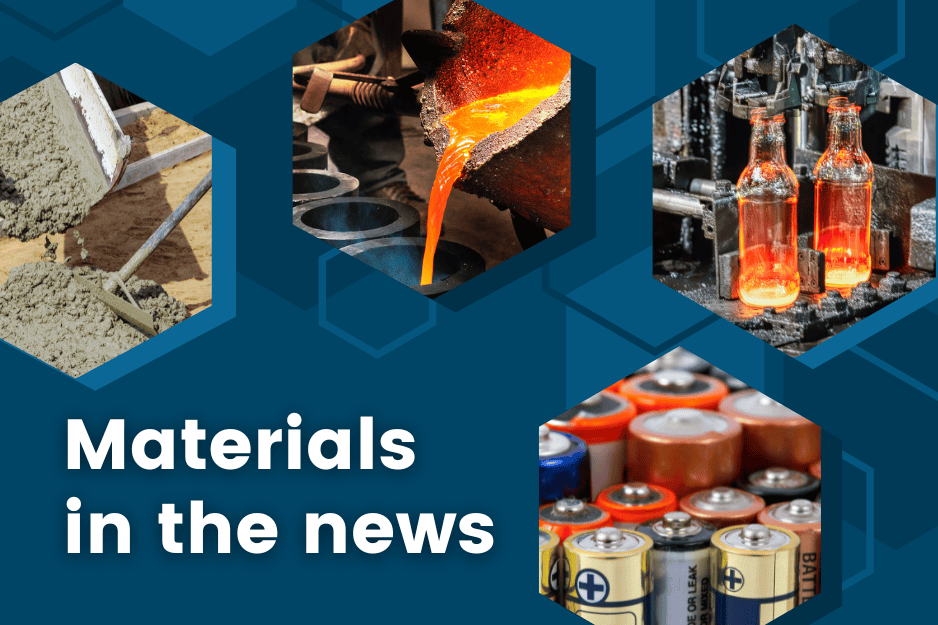
[Image above] Credit: ACerS
NANOMATERIALS
‘Smaller and better’: Research uncovers performance sweet spot for relaxor nanomaterial
Rice University researchers shed light on how the extreme miniaturization of thin films affects the behavior of relaxor ferroelectrics. The findings reveal that as the film shrinks to dimensions comparable to the materials’ internal polarization structures, their fundamental properties improve before being lost.
Graphene coating protects glasses from mechanical and chemical damage under water
Indian Institute of Technology Delhi researchers demonstrated that an atomically thin graphene coating can greatly improve the mechanical and chemical durability of glasses exposed to water. Molecular simulations revealed the mechanisms behind the coating’s effectiveness.
New nanoscale technique unlocks quantum material secrets
Argonne National Laboratory researchers developed a surface-sensitive spintronic terahertz spectroscope that provides an unprecedented look at how quantum materials behave at interfaces.
ENERGY
Engineers develop fully 3D-printed electrospray engine
Massachusetts Institute of Technology engineers demonstrated the first fully 3D-printed, droplet-emitting electrospray engine. The device, which would be ideal for enabling small satellites to make in-orbit maneuvers, can be produced for a fraction of the cost of traditional thrusters.
New technology turns waste heat into electricity
Researchers at the University of Colorado Boulder, in collaboration with National Renewable Energy Laboratory and the University of Wisconsin-Madison, developed a new technology to turn thermal radiation into electricity. They designed a compact thermophotovoltaic device that can overcome the vacuum limit defined by Planck’s law, thus doubling the yielded power density achieved by conventional thermophotovoltaic designs.
ENVIRONMENT
Decommissioned wind turbine blades recycled into asphalt for new roads
Researchers from the Lanzhou Institute of Chemical Physics at the Chinese Academy of Sciences devised a process of crushing and chemically treating old blades so they can be combined into asphalt mixtures and cement concrete for constructing roads.
Sustainable building components create a good indoor climate
Researchers at ETH Zurich developed a climate-friendly covering for walls and ceilings that temporarily stores moisture, creating a comfortable environment in heavily used indoor spaces. The covering components are made of mineral waste materials and are produced by means of 3D printing.
MANUFACTURING
Tiny acid droplets turn metal into glass-like material
Instead of immersing entire sheets of metal into acidic solutions, Ateneo de Manila University researchers applied microdroplets of acidic solution onto small aluminum surfaces and applied an electric current. Just two volts of electricity was all that was needed to transform the metal into glass-like transparent aluminum oxide.
Novel transparent ceramics extend life of semiconductor etching equipment
Researchers developed a new composition and processing technology for transparent plasma-resistant high-entropy ceramics. These ceramics are designed to extend the lifespan of internal components in semiconductor etching equipment while reducing contamination particles during the semiconductor manufacturing process.
OTHER STORIES
Surface wave patterns reveal 4D crystal structure
Researchers from Technion – Israel Institute of Technology, together with the University of Stuttgart and the University of Duisburg-Essen, demonstrated that not only do higher dimensional crystals dictate the mechanical properties of quasiperiodic crystals, they also determine their topological properties.
Terahertz pulses induce chirality in a nonchiral crystal
Researchers at the University of Oxford and the Max Planck Institute for the Structure and Dynamics of Matter showed that terahertz light can induce chirality in a nonchiral crystal (boron phosphate), allowing either left- or right-handed enantiomers to emerge on demand.
Physicists stabilize superconducting states at ambient pressure
Using a technique called the pressure-quench protocol, University of Houston researchers successfully stabilized bismuth antimony telluride’s high-pressure-induced superconducting states at ambient pressure.
Unwanted vibrations strengthen quantum dots for secure communication
Researchers examined the complex interactions between quantum dots and phonons, studying how they affect the properties of the emitted photons. To their surprise, they discovered that under certain conditions, such as the right intensity of the driving laser, phonons can actually enhance the quantum dot’s photon number coherence.
Author
Lisa McDonald
CTT Categories
- Weekly Column: “Other materials”